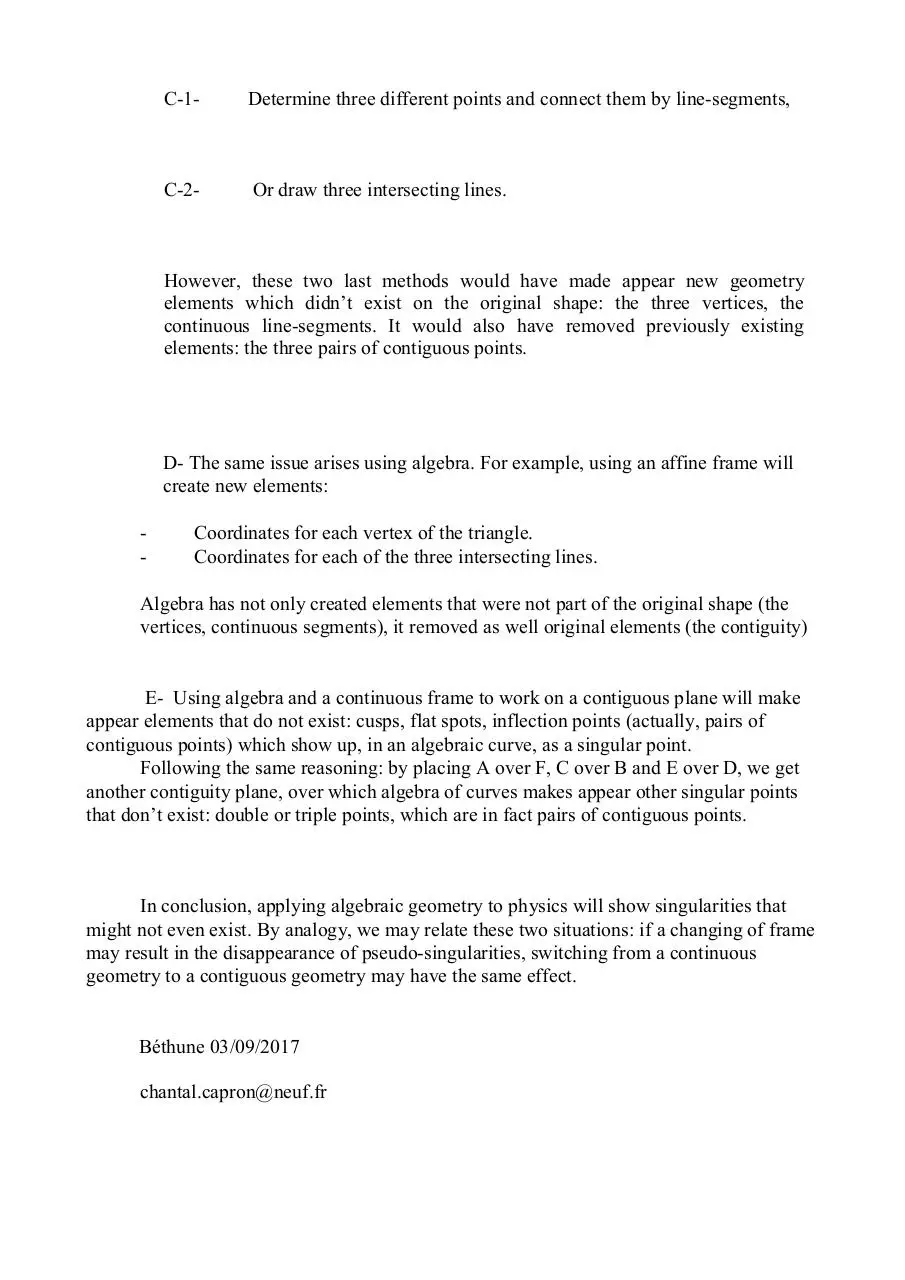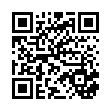For a Contiguity based geometry (PDF)
File information
This PDF 1.7 document has been generated by / Foxit PhantomPDF Printer Version 6.0.4.1129, and has been sent on pdf-archive.com on 26/09/2017 at 17:02, from IP address 90.110.x.x.
The current document download page has been viewed 46020 times.
File size: 272.59 KB (3 pages).
Privacy: public file



File preview
For a contiguity-based geometry
Reference: - On contiguous point spaces, Theodore Hailperin, University of Michigan,
1939.
-
Esquisse d'une Sémiophysique, René Thom, Inter Editions 1988, preamble
p12 et 13, about O, a point which splits into O1 and O2, that is two
different points that are adjacent.
A-1- The circle and the AB line segment are contiguous in C and D.
A-2- A-B, C-D and E-F are three well-defined line segments.
A-3- Each of these three line-segments are contiguous with the two others, forming
a triangle which has no vertices.
B-1- By varying the size of different line segments, we developed the idea that each
is in fact constituted of a group of contiguous points.
B-2- By induction we may postulate the existence of a geometry plane made entirely
of contiguous points. We’ll call it a contiguity plane.
We might have used another way to construct this triangle:
D
A
B
C
A
B
C
D
E
F
FA
ED
CB
C-1-
Determine three different points and connect them by line-segments,
C-2-
Or draw three intersecting lines.
However, these two last methods would have made appear new geometry
elements which didn’t exist on the original shape: the three vertices, the
continuous line-segments. It would also have removed previously existing
elements: the three pairs of contiguous points.
D- The same issue arises using algebra. For example, using an affine frame will
create new elements:
-
Coordinates for each vertex of the triangle.
Coordinates for each of the three intersecting lines.
Algebra has not only created elements that were not part of the original shape (the
vertices, continuous segments), it removed as well original elements (the contiguity)
E- Using algebra and a continuous frame to work on a contiguous plane will make
appear elements that do not exist: cusps, flat spots, inflection points (actually, pairs of
contiguous points) which show up, in an algebraic curve, as a singular point.
Following the same reasoning: by placing A over F, C over B and E over D, we get
another contiguity plane, over which algebra of curves makes appear other singular points
that don’t exist: double or triple points, which are in fact pairs of contiguous points.
In conclusion, applying algebraic geometry to physics will show singularities that
might not even exist. By analogy, we may relate these two situations: if a changing of frame
may result in the disappearance of pseudo-singularities, switching from a continuous
geometry to a contiguous geometry may have the same effect.
Béthune 03/09/2017
chantal.capron@neuf.fr
Download For a Contiguity-based geometry
For a Contiguity-based geometry.pdf (PDF, 272.59 KB)
Download PDF
Share this file on social networks
Link to this page
Permanent link
Use the permanent link to the download page to share your document on Facebook, Twitter, LinkedIn, or directly with a contact by e-Mail, Messenger, Whatsapp, Line..
Short link
Use the short link to share your document on Twitter or by text message (SMS)
HTML Code
Copy the following HTML code to share your document on a Website or Blog
QR Code to this page

This file has been shared publicly by a user of PDF Archive.
Document ID: 0000678266.